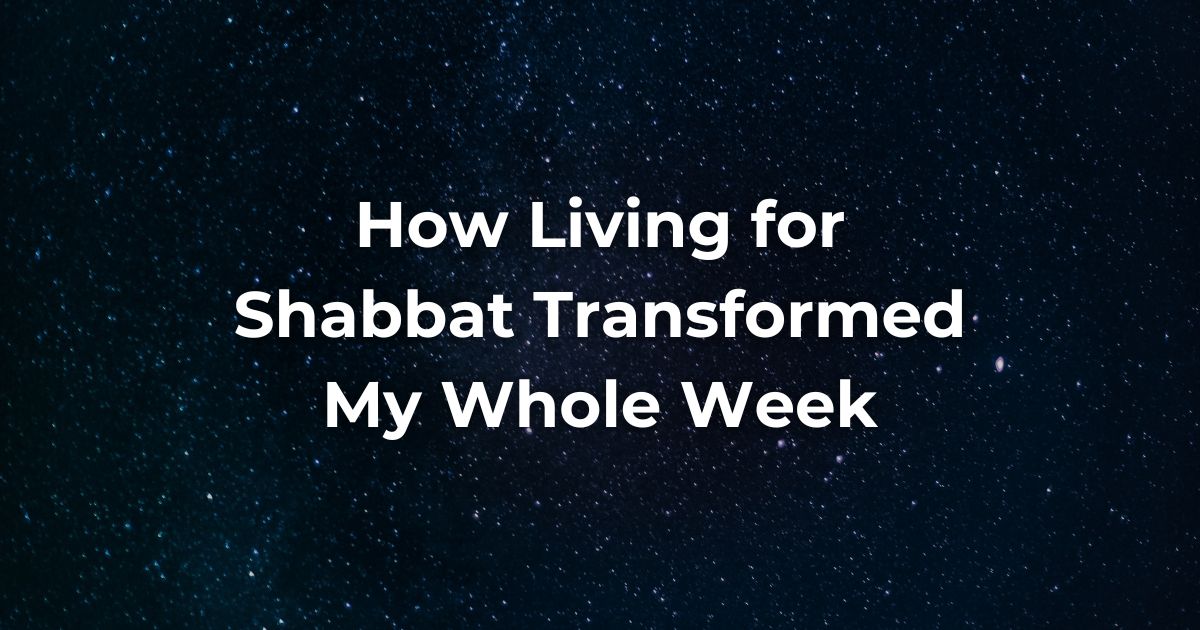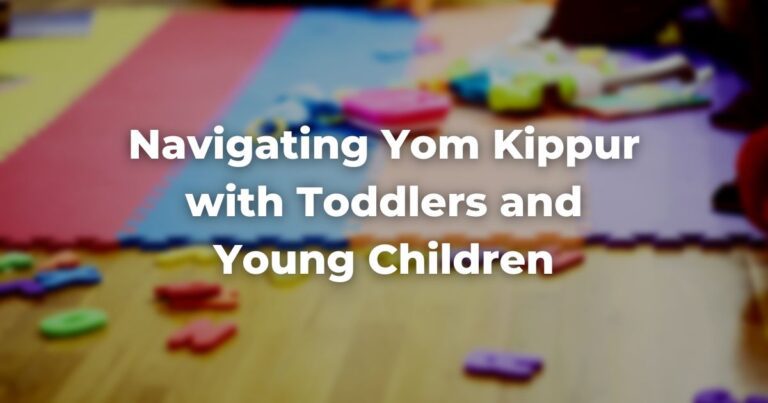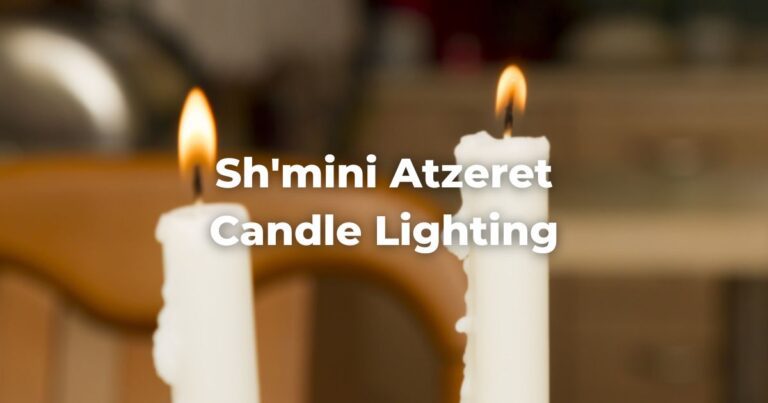My first encounter with Fiddler on the Roof led me to a kind of existential crisis, but not for one of the reasons you might expect — the themes of assimilation, antisemitism, or anything like that.
No, on NPR, I heard Terry Gross talking about the Fiddler song “To Life,” famous for its refrain of “l’chaim.”
What a peculiar phrase, I thought, having never heard it before.
For some reason, something inside me took the toast as a searing indictment. It occurred to me: I don’t do anything for the sake of life. I wander around from one worry to the next. When I do something for fun, it’s to find some brief relief from the anxiety.
I couldn’t even remember the last time I did something for its own sake. My life felt like a cycle of distraction, procrastination, and wondering what to stress out about next.
Up until then, I thought this was noble. Of course, I hadn’t achieved enough to deserve to be happy. When I finish my work — then I can enjoy life. Wait, when I finish my work, clean my room, do my laundry, and do the dishes, then I can enjoy life.
The problem, I realized that day, is that “then” never comes — not if I make it contingent on getting my whole life perfect first. Time, meanwhile, marches on relentlessly. As the Jewish singer-songwriter Regina Spektor tells us, “Time is not given, and time is not taken. It just sifts through itself.”
However, Judaism, I was vaguely aware, offers us a loophole. We have a time that’s gifted: Shabbat. We pray at Saturday services:
With love, You have given Shabbat to the people Israel … The people who sanctify the seventh day shall feel fulfilled and shall delight in Your goodness. (Siddur Lev Shalem for Shabbat & Festivals)
But, I didn’t know that part of the Shabbat prayers yet. In fact, I hardly knew anything about Shabbat or Judaism at all. I did, though, make a small resolution: Every Friday night, I would do something purely to live in the moment.
Initially, I had no idea how to do this. For my first attempt, instead of, like usual, sitting in a coffee shop on my laptop with a cup of coffee doing work, I sat in a combination coffee-shop–bar with my laptop and a glass of wine. What I did on my laptop I don’t remember. And I don’t remember it being an especially fulfilling night. But it was a step.
The second time I tried to step into something like Shabbat, I took the train to a library and, because I was Getting Into Judaism now, tried to catch up on the newly begun Daf Yomi cycle. This TalmudReferring to one of two collections, the Jerusalem and Babylonian Talmuds, edited in the 6th century, that contains hundreds of years of commentary, discussion, and exploration of the ideas in the Mishnah. One could describe it as Mishnah + Gemara = Talmud Read more page stressed the importance of praying. So I’m gonna say the afternoon prayers, I decided. But how? I looked up a prayer-book app on my phone and downloaded it. But to my surprise, when I tried to open it, the app gave a message saying it doesn’t work on Shabbat and to try again later.
As the weeks went on, I grew little by little, and then the Covid-19 pandemic shook all of our lives. People’s sense of time was broken. But I had a lifeline. Shabbat was an anchor in my existence, dictating the flow of the week.
Slowly, I started elevating my dinners to Shabbat dinners, lighting Shabbat candles, streaming services online, and making havdalah. I didn’t worry too much about doing this or that exactly according to the letter of the law. The main thing was setting aside time to go easy on myself.
Since then, I’ve had back-and-forths with spiritually and social-justice–inclined people: Are we taking a break in order to come back stronger, or because Shabbat is a key purpose of life itself? Personally, I fall on the side of the second option. Shabbat, as we sing on Friday nights in “Lecha Dodi,” was, Sof ma’aseh, bemachashavah techillah, “Last created, first imagined.”
But the good news is we don’t have to choose
We can go into Shabbat for semi-hedonistic reasons — wanting to eat a good meal, hang out with friends, and catch up on sleep — and come out feeling transformed, the day having done the work it needed to do. Shabbat is the capstone of one week and the cornerstone of the next. And it’s by stringing those weeks together that we create an elevated life.
To some of my peers, Shabbat remains a paradox. We’re going to spend time together and nosh on our favorite foods, but we’re not allowing ourselves to, say, take a drive to the lake and go fishing, or have a barbecue by the pool? Abraham Joshua Heschel writes that on Shabbat we “dominate the self.” What is peaceful or celebratory about that? How is it any better than going to the gym or answering emails?
And it’s true — if we’re not careful, we can easily make Shabbat one of the hardest parts of practicing Judaism. Going for a high-score on the observance meter is a recipe for failure and for giving up.
“If you’re simply trying to do it as a discipline of the self, as a form of self-improvement, I think it just becomes another thing like dieting. Something to beat yourself up with,” warns Judith Shulevitz, author of The Sabbath World: Glimpses of a Different Order of Time.
We’re right to be skeptical of a Shabbat that turns piety into a competitive sport, or into a self-improvement program akin to “biohacking” or hot yoga. The important thing to remember is a Shabbat practice really isn’t about the “self” at all. It’s about setting self-concern aside and opening our consciousness up to the world and to others.
Yes, bringing Shabbat into our lives costs us the opportunity to do certain things, but, in my opinion, far greater is what it lets us gain: the dinners with friends that go on late into the night, the excuse to set aside the social-media apps that have functionally turned into Cocomelon for adults, and the long afternoons where your brain feels restored to factory settings, and you can look at the world through the eyes of a child again.
My favorite verse in “To Life” makes me wonder whether lyricist Sheldon Harnick was a mystic:
God would like us to be joyful
Even when our hearts lie panting on the floor.
How much more can we be joyful
When there’s really something to be joyful for?
Most Friday afternoons, at the end of a long week, we find ourselves living in the first half of that verse. But, by turning joy into a practice, we’re rewiring our brains to find joy where it’s concealed from us — and to truly appreciate joy when it’s manifest.
Author
-

Cody Fitzpatrick is a freelance writer and editor based in Arizona. In addition to Exploring Judaism, he currently mainly works with 18Forty and Phoenix New Times. He is a member of The New Shul in Scottsdale, Arizona.
View all posts




